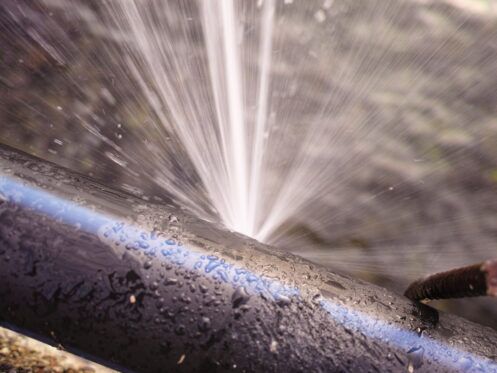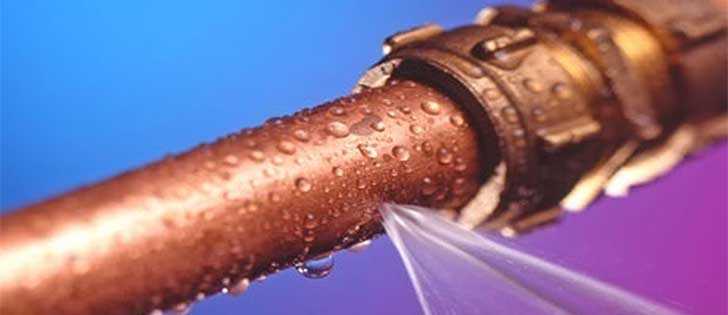What to Do When a Burst Pipe Causes Water Damage in Your Home
What to Do When a Burst Pipe Causes Water Damage in Your Home
Blog Article
Protecting Against Ruptured Pipeline: Necessary Tips to Secure Your Pipes
Protecting against ruptured pipes is an essential worry for house owners, particularly throughout chillier months when the threat of freezing is increased. Applying calculated actions such as proper insulation, routine assessments, and maintaining consistent indoor temperatures can dramatically decrease the possibility of pipe failure. Furthermore, understanding emergency treatments equips property owners to react promptly to possible plumbing problems. Several are not aware of the certain vulnerabilities that their pipelines may deal with. Checking out these susceptabilities can offer vital understandings right into securing your pipes system effectively.
Understand Pipeline Vulnerabilities
Understanding pipeline vulnerabilities is essential for reliable plumbing upkeep and avoiding pricey damage. Numerous elements add to the vulnerability of pipes to ruptureds, including material make-up, age, and environmental problems. Older pipes, specifically those made from galvanized steel or polybutylene, typically degrade gradually, leading to boosted risk of leakages and tears.
Temperature level fluctuations can additionally significantly effect pipeline integrity. In chillier environments, water trapped in pipes can ice up, expanding and putting in pressure on the pipeline wall surfaces, which might ultimately bring about a ruptured. Furthermore, high water stress can strain pipes, especially at joints and bends, increasing the probability of failing.

Insulate Water Lines Correctly
Proper insulation of pipelines is vital for stopping freezing and subsequent ruptureds throughout cold weather (burst pipe). Protecting your plumbing system efficiently safeguards versus temperature level drops that can bring about costly damages. Begin by recognizing vulnerable areas where pipelines are exposed to exterior temperatures, such as cellars, attics, and exterior walls
Use foam pipeline insulation sleeves or wrap insulation tape around these locations to give a safety barrier. Ensure that all areas of the pipes, specifically those with limited warm exposure, receive ample insulation. Pay unique attention to joints and fittings, as these are much more prone to cold.
When insulating, it's important to choose materials that meet neighborhood building regulations and are ideal for the details atmosphere. For instance, fiberglass insulation is often recommended for its thermal resistance residential or commercial properties - burst pipe. Additionally, think about making use of warmth cables or tape in severe problems, which can be plugged in to offer additional warmth
On a regular basis examine shielded pipes for any signs of wear or damages, as endangered insulation can lessen its efficiency. By taking these proactive procedures, you dramatically lower the risk of pipe bursts, guaranteeing a trustworthy plumbing system throughout the cold weather.
Maintain Regular Temperature
A stable indoor temperature is necessary for stopping ruptured pipelines throughout the cold months. When temperature levels drop, water within pipelines can freeze, expanding and producing stress that might inevitably create the pipelines to burst.Utilizing a programmable thermostat can aid manage interior temperature levels effectively, making sure that areas with plumbing continue to be warm also when the house is vacant.
Furthermore, it is sensible to allow taps to drip somewhat during severe cool spells. This small flow of water can stop freezing by relieving stress within the pipes. During especially extreme climate occasions, consider briefly putting on hold any nighttime problems on your thermostat to keep a steady cozy setting. By implementing these techniques, homeowners can substantially lower the threat of pipe bursts and guard their plumbing systems against the severe winter season elements.
Consistently Check Plumbing
Regular examinations of pipes systems are vital for preventing burst pipes and maintaining general home honesty. Routine checks permit property owners to identify possible concerns prior to they intensify right into costly repair services or significant water damages. During these assessments, it is important to like this take a look at noticeable pipelines for indicators of deterioration, leakages, or use. Pay unique focus to locations susceptible to freezing, such as basements, attic rooms, and outside walls.
In addition, checking links and joints is crucial, as these points are commonly vulnerable to leaks. Homeowners need to likewise evaluate water stress levels, as too much pressure can stress the plumbing system and enhance the risk of pipe ruptureds.
Think about scheduling expert plumbing assessments at the very least when a year, particularly before winter months, to guarantee your system is gotten ready for chillier temperatures. Normal evaluations not only aid in identifying immediate worries but likewise foster long-term upkeep strategies that can improve the life expectancy of your plumbing system. By being proactive in your strategy, you can protect your home against the expensive and turbulent effects of burst pipelines. Prioritizing pipes assessments is a financial investment in your house's health and website here wellness.
Know Emergency Procedures
Comprehending emergency situation treatments is vital for every home owner, specifically after conducting normal plumbing examinations. Being prepared for a plumbing emergency situation can substantially minimize damages and conserve costs. Find your primary water shut-off valve; it is commonly discovered near the water meter or where the main line enters your home. Acquaint yourself with its operation, as shutting down the water promptly can protect against comprehensive flooding.
Following, keep vital devices convenient. A plumbing emergency kit ought to include a wrench, bettor, and towels, in addition to a flashlight and a bucket for small leakages. In addition, think about having the call info for a trusted plumbing professional easily offered, must the situation escalate past your control.
If you detect a leakage or ruptured pipe, quickly switch off the supply of water and inform your plumbing professional. Record the damage with photos for insurance functions. Be aware of the indications of possible plumbing problems, such as unusual water pressure variations or damp areas on wall surfaces
Eventually, proactive understanding and quick action are crucial in handling plumbing emergencies, ensuring your home continues to be safeguarded and minimizing potential damage.

Conclusion
In final thought, avoiding burst pipelines demands a complex strategy that includes understanding pipe susceptabilities, proper insulation, keeping constant indoor temperatures, normal inspections, and knowledge of emergency treatments. By implementing these essential approaches, the danger of pipes failures can be significantly reduced, thereby making certain the longevity and efficiency of the plumbing system. Aggressive procedures not just safeguard against prospective damages yet additionally add to total water preservation and the defense of building.
In cooler climates, water entraped in pipelines can ice up, expanding and exerting stress on the pipe wall click here to find out more surfaces, which may inevitably lead to a burst. When temperature levels decline, water within pipes can freeze, producing and broadening stress that may eventually cause the pipes to burst. By carrying out these techniques, house owners can significantly reduce the danger of pipe ruptureds and secure their plumbing systems versus the harsh wintertime aspects.

Report this page